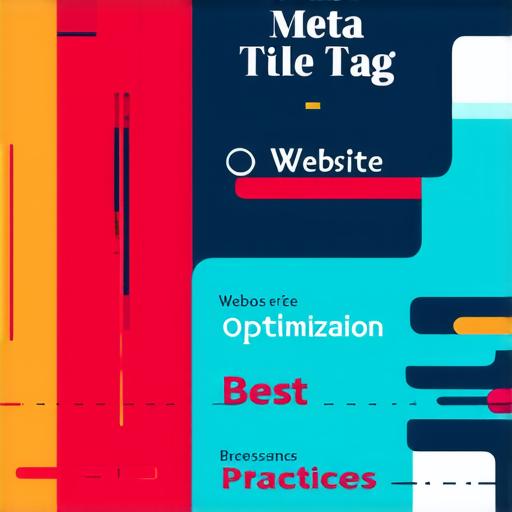As virtual reality (VR) technology continues to grow in popularity, more and more developers are creating immersive experiences for users. However, with so many options available, standing out in the crowded VR market can be challenging. One effective way to increase your website’s visibility and attract more visitors is by optimizing your meta tags.
Meta Tags: What Are They and Why Are They Important?
A meta tag is a piece of HTML code that provides additional information about your website to search engines and social media platforms. Meta tags include information such as the page’s title, description, keywords, and more.

Best Practices for Meta Title Tag Development
To create effective meta titles that will help your VR website rank higher in search engines and attract more visitors, consider the following best practices:
- Keep it concise: Meta tags should be short and to the point, ideally no longer than 70 characters. This includes spaces between words.
- Use relevant keywords: Meta tags should include relevant keywords related to the content of the webpage. Incorporating these keywords can help search engines better understand what the page is about and increase the likelihood that it will rank higher on SERPs.
- Be descriptive: A meta title should accurately describe the content on the page, so users have a clear idea of what they’re clicking on. Avoid using misleading or deceptive titles that may lead to user frustration and decreased engagement with your website.
- Use long-tail keywords: Long-tail keywords are longer phrases that are more specific to your niche or industry. Including long-tail keywords in your meta tags can help attract visitors who are searching for highly targeted information related to VR development.
- Include branding: Your meta title should include your brand name or logo, which helps establish your website’s identity and increase brand recognition.
- Test and optimize: Regularly test and analyze your meta titles to determine what works best for your audience. You can use tools like Google Analytics or A/B testing software to track user engagement and click-through rates (CTR) from SERPs, which can help you make data-driven decisions about how to improve your meta tags over time.
- Follow guidelines: Finally, follow the guidelines set by search engines for meta tags. For example, Google recommends that meta titles should be unique on each page and include a primary keyword.
Case Studies: Successful Meta Title Optimization in VR Development
To illustrate how effective meta title optimization can be for VR development, let’s look at some real-life examples of successful meta tags used by leading VR companies.
1. Oculus: “Virtual Reality Headsets | Oculus Rift S & Quest 2”
This meta title includes the primary keyword “virtual reality” and is concise at only 43 characters, making it easy to read on SERPs. It also includes two long-tail keywords (“Oculus Rift S” and “Quest 2”) that may attract visitors searching for specific VR headset models.
2. HTC: “VR Headset | HTC Vive Pro Eye & Vive Focus 3”
Similar to Oculus, HTC’s meta title includes the primary keyword “VR headset” and is concise at only 50 characters. It also includes two long-tail keywords (“Vive Pro Eye” and “Focus 3”) that may attract visitors searching for specific VR headset models.
3. Samsung: “Samsung Gear VR Headset | Experience Virtual Reality with Samsung”
This meta title is longer at 67 characters, but it includes the primary keyword “VR headset” and emphasizes the experience aspect of VR development, which may be attractive to users searching for immersive experiences.
4. Sony: “PlayStation VR Headset | Immerse Yourself in Gaming with PlayStation”
Sony’s meta title includes the primary keyword “VR headset” and emphasizes the gaming aspect of VR development, which may be attractive to users searching for immersive gaming experiences.
Comparing Meta Titles: Best Practices vs. Reality
To see how well these leading VR companies are following best practices for meta title optimization, we can compare their meta titles to the guidelines set by search engines.
- Oculus is following most of the best practices, including using relevant keywords, keeping it concise, and including branding. However, they could improve by including long-tail keywords to attract visitors searching for specific VR headset models.
- HTC is also following most of the best practices, including using relevant keywords, keeping it concise, and including branding. They could improve by including long-tail keywords to attract visitors searching for specific VR headset models.
- Samsung is doing well with the primary keyword but could improve by being more descriptive and using long-tail keywords to attract visitors searching for immersive gaming experiences.
- Sony is also doing well with the primary keyword but could improve by being more descriptive and including long-tail keywords to attract visitors searching for immersive gaming experiences.
Conclusion: Boosting Your VR Website’s Visibility with Effective Meta Title Tags
Optimizing your meta tags is a critical component of any SEO strategy, especially for VR development websites that want to stand out in the crowded market. By following best practices for meta title development, including keeping it concise, using relevant keywords, being descriptive, and testing and optimizing regularly, you can create engaging and informative content that ranks higher on SERPs and drives more traffic to your website. Remember to also follow guidelines set by search engines and use long-tail keywords to attract visitors searching for highly targeted information related to VR development. With effective meta title optimization, you can boost your VR website’s visibility and increase user engagement, leading to greater success in the competitive VR market.
